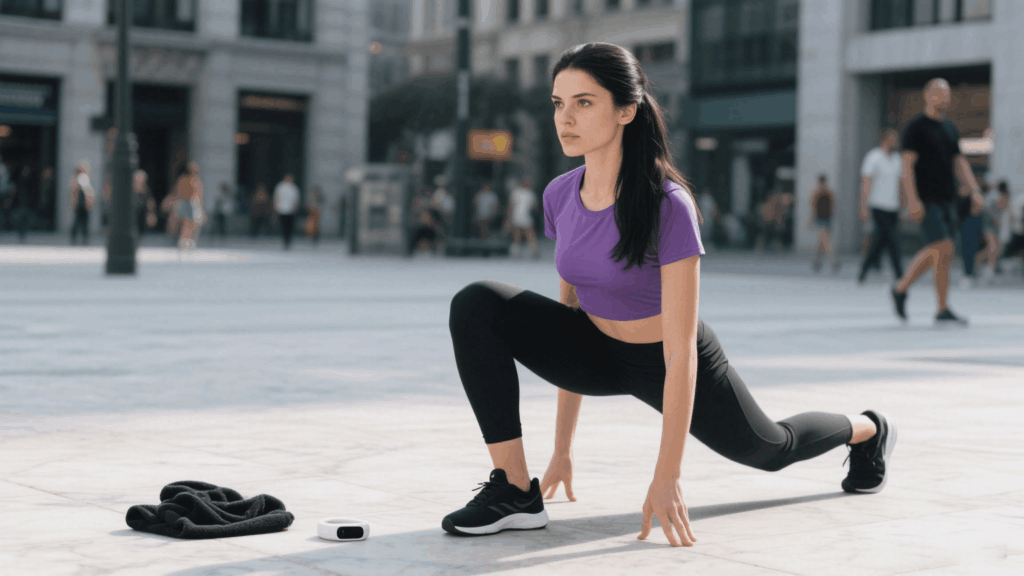
Introduction
In today’s fast-paced world, convenience and flexibility are essential when it comes to fitness. Many people are looking for practical ways to stay in shape without spending hours commuting to the gym or investing in expensive equipment. Home workouts are becoming increasingly popular, and the best part is, they can be just as effective as gym-based routines when done right.
Whether you’re aiming to tone muscles, improve endurance, or simply move more each day, there’s a way to train effectively using only your body. This comprehensive guide will walk you through the essentials of a good workout you can perform anywhere.
What Is a Good Bodyweight Workout?
A good bodyweight workout uses your own weight to create resistance, helping you build strength, increase flexibility, and improve cardiovascular health. It is structured, balanced, and targets all major muscle groups through functional movements. Unlike random exercises, an effective routine focuses on progression, proper form, and full-body engagement.
The benefits of bodyweight workouts include:
- Accessibility: No equipment needed
- Adaptability: Suitable for all fitness levels
- Efficiency: Full-body conditioning in less time
- Low Risk: Lower impact on joints when done correctly
An ideal routine includes exercises that work the upper body, lower body, and core, and can be modified to suit your fitness goals.
Benefits of Bodyweight Training
1. Build Strength Without Equipment
Using your body as resistance challenges muscles in natural, functional ways. Moves like push-ups, squats, and lunges recruit multiple muscle groups, improving balance, coordination, and overall strength.
2. Improve Mobility and Flexibility
Many bodyweight exercises promote joint health and flexibility. Dynamic movements and active stretches, such as lunges with a twist or yoga poses, help improve mobility.
3. Burn Fat and Improve Cardiovascular Health
High-intensity bodyweight circuits elevate your heart rate and burn calories. Exercises like mountain climbers, jump squats, and burpees increase cardiovascular endurance and support fat loss.
4. Convenience and Cost-Effectiveness
One of the greatest advantages of a good bodyweight workout is that it can be done anywhere—at home, outdoors, or even while traveling. There is no need for gym memberships, weights, or machines.
5. Enhances Mental Wellbeing
Physical activity has been linked to reduced stress and improved mood. The simplicity and freedom of bodyweight training reduce barriers to consistent exercise, promoting mental clarity and self-confidence.
Components of a Good Bodyweight Workout
To build an effective bodyweight routine, focus on the following categories:
Upper Body
- Push-ups: Targets chest, triceps, and shoulders
- Dips (using a chair): Triceps and chest
- Pike Push-ups: Shoulders and upper back
- Plank to Downward Dog: Shoulders and core activation
Lower Body
- Bodyweight Squats: Quads, glutes, and hamstrings
- Lunges (forward, reverse, side): Glutes, hamstrings, and balance
- Step-ups (using a stair or bench): Glutes and quads
- Wall Sit: Builds endurance and leg strength
Core
- Plank Variations (side, forearm, reach-out): Core stability
- Mountain Climbers: Core and cardio
- Leg Raises: Lower abdominal muscles
- Russian Twists: Obliques
Structuring Your Routine
A good bodyweight workout plan should be:
- Balanced: Include all major muscle groups
- Progressive: Increase reps or intensity over time
- Varied: Mix in different exercises to avoid plateaus
- Goal-Oriented: Tailored to strength, endurance, or weight loss
Example Weekly Split:
- Day 1: Full-Body Circuit
- Day 2: Lower Body Focus
- Day 3: Rest or Active Recovery
- Day 4: Upper Body & Core
- Day 5: Cardio HIIT Bodyweight
- Day 6: Flexibility & Mobility
- Day 7: Rest
Sample 30-Minute Full-Body Workout
Warm-up (5 minutes): Jumping jacks, arm circles, high knees
Workout Circuit (Repeat 3x):
- 15 Push-ups
- 20 Bodyweight Squats
- 30 Mountain Climbers
- 15 Reverse Lunges (each leg)
- 20-Second Side Plank (each side)
- 20 Jumping Squats
- 15 Leg Raises
Cool-down (5 minutes): Forward fold, hip stretch, child’s pose
How to Progress and Challenge Yourself
Progression is essential to keep making gains. Ways to advance include:
- Increase Reps/Sets: Gradually boost volume over time
- Slow Down Movement: Increase time under tension
- Add Plyometrics: Jump squats, burpees, jump lunges
- Try Advanced Moves: One-arm push-ups, pistol squats, wall walks
Tracking your progress weekly will help you stay motivated and identify when it’s time to level up.
Common Mistakes and How to Avoid Them
- Skipping Warm-up: Always prepare muscles before training
- Poor Form: Focus on technique to prevent injury
- Doing Too Much Too Soon: Build gradually to avoid burnout
- Neglecting Recovery: Rest days are vital for muscle repair and growth
Tools and Apps to Support Bodyweight Training
There are many digital tools that support building a good bodyweight workout habit:
- Workout Apps: Fitbod, Nike Training Club, Freeletics
- YouTube Channels: Pamela Reif, MadFit, HASfit
- Trackers: Use spreadsheets, habit trackers, or fitness journals
Final Thoughts: Why Bodyweight Workouts Work for Everyone
A good bodyweight workout is more than just an at-home option. It’s a highly effective, accessible, and sustainable way to build a strong, healthy body. With no equipment required, it removes the barriers many face when trying to establish a fitness habit.
By focusing on form, consistency, and progression, you can achieve impressive results from wherever you are. Whether you’re just starting or looking for a new way to challenge your body, bodyweight training has the power to deliver real change.
